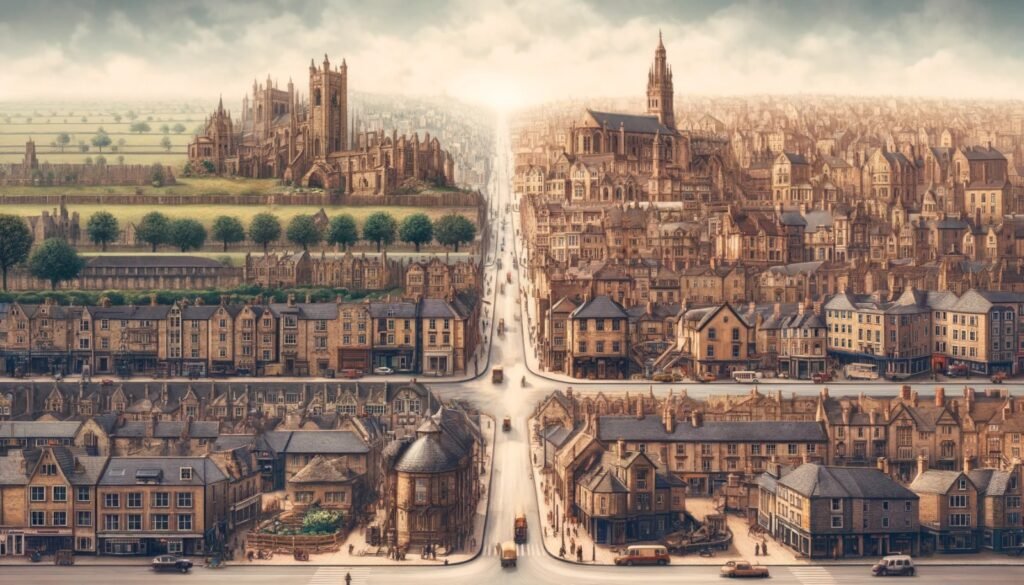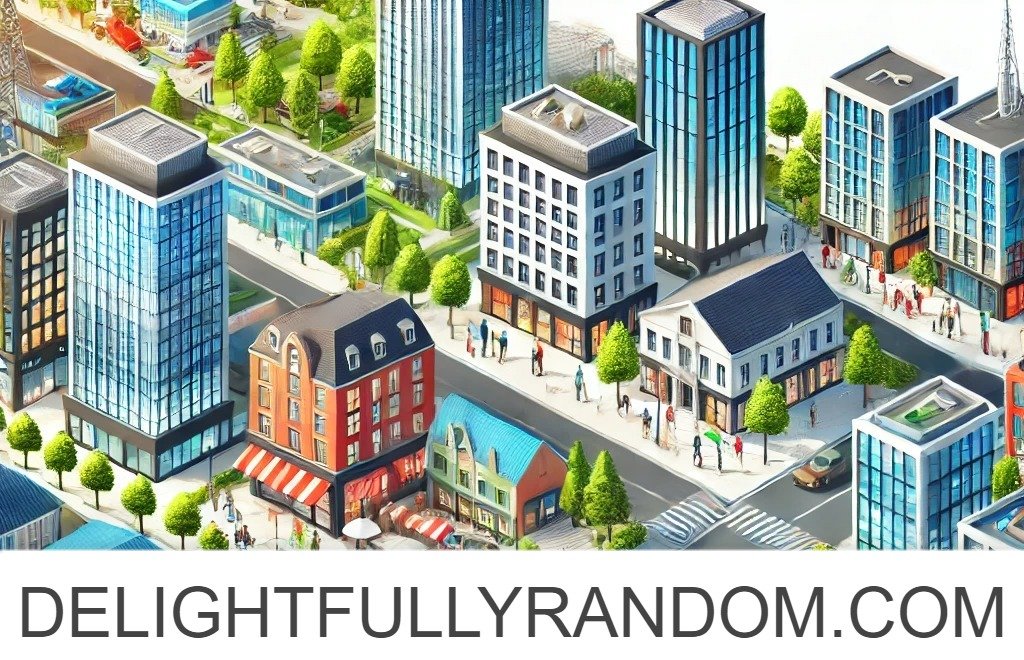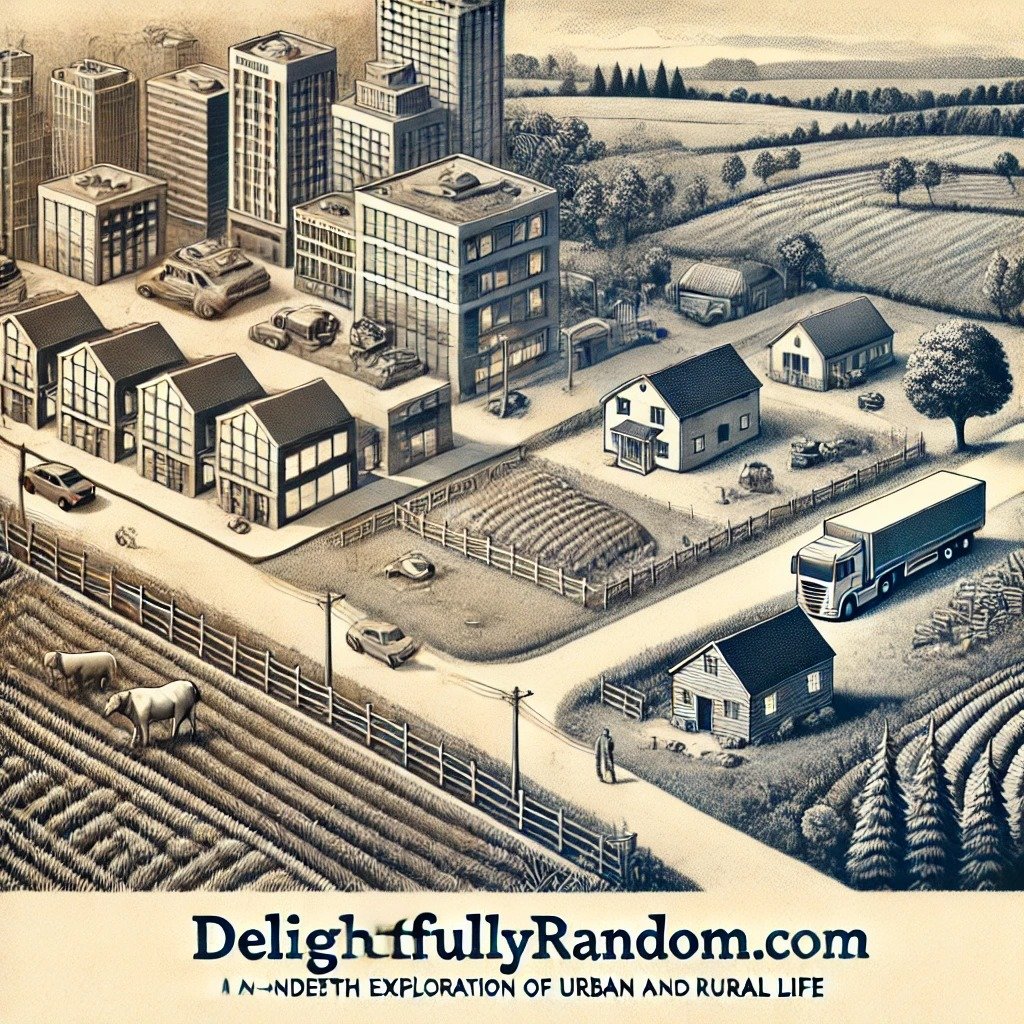The concept of a “town” has evolved over centuries, embodying a wide range of meanings, structures, and purposes depending on the region and culture. A town typically refers to a human settlement that is larger than a village but smaller than a city, serving as a central hub for local trade, governance, and social life. In this article, we will explore the multifaceted nature of towns, their historical significance, the differences between urban and rural towns, and their role in modern society Tuguiausa.
It is a vibrant hub of community life, blending the charm of close-knit neighborhoods with the convenience of urban amenities. Typically larger than a village but smaller than a city, it serve as centers for commerce, culture, and social interaction. They often feature a mix of residential areas, local businesses, schools, and recreational spaces, fostering a strong sense of belonging among residents. They are characterized by their unique identities, shaped by historical landmarks, local traditions, and diverse populations. Whether nestled in rural landscapes or adjacent to bustling cities, they play a crucial role in connecting people and nurturing community spirit.
The Historical Evolution of Towns

Towns have been an essential part of human civilization for thousands of years, serving as centers of commerce, culture, and community. The development of towns can be traced back to ancient times when they emerged as trading hubs where people could exchange goods, services, and ideas. These early towns were often located near rivers, crossroads, or other strategic locations that facilitated trade and communication.
In medieval Europe, they began to take on more formal structures, often growing around castles, monasteries, or important trade routes. These towns were typically surrounded by walls for protection and featured a central market square where merchants and craftsmen would sell their wares. The rise of towns during this period also led to the development of local governance, with town councils and mayors emerging to manage the affairs of the community.
As the Industrial Revolution took hold in the 18th and 19th centuries, towns began to grow rapidly, transforming from small, rural settlements into bustling centers of industry and commerce. This period saw the rise of factory towns, where the economy was driven by manufacturing and production. The growth of towns during this time was often accompanied by challenges, such as overcrowding, poor sanitation, and social inequality, but it also paved the way for modern urban planning and infrastructure tu guia usa.
Urban vs. Rural Towns: Key Differences
Towns can broadly be classified into two categories: urban and rural. While both types of towns serve as central points for their respective communities, they differ significantly in terms of size, population, economy, and lifestyle.
Urban Towns: Urban towns are typically located near or within larger cities and often serve as suburbs or satellite communities. These towns are characterized by higher population densities, more developed infrastructure, and a greater variety of services and amenities. Urban towns tend to have a more diverse economy, with industries ranging from retail and hospitality to technology and finance. The lifestyle in urban towns is often fast-paced, with residents having access to a wide range of cultural, recreational, and educational opportunities.
Urban towns are also more likely to experience the challenges associated with urbanization, such as traffic congestion, pollution, and housing shortages. However, they also benefit from greater connectivity, with well-developed transportation networks and access to public services like healthcare and education.
Rural Towns: In contrast, rural towns are located in more remote areas, often surrounded by farmland, forests, or natural landscapes. These towns are typically smaller in size and population, with a more close-knit community atmosphere. The economy of rural towns is often based on agriculture, forestry, or tourism, with fewer job opportunities in other industries.
The lifestyle in rural towns is generally slower-paced, with a strong emphasis on community and tradition. Residents of rural towns often have a deep connection to the land and the natural environment, and the town itself may serve as a hub for local agricultural or artisanal products.
While rural towns may lack some of the amenities and services found in urban areas, they offer a quieter, more peaceful way of life that appeals to those seeking a break from the hustle and bustle of city living. However, rural towns can also face challenges, such as limited access to healthcare, education, and employment opportunities, as well as the risk of population decline due to outmigration.
The Role of Towns in Modern Society

In the modern world, towns continue to play a vital role in the social, economic, and cultural fabric of society. They serve as focal points for local governance, commerce, and community life, providing residents with essential services and a sense of identity and belonging.
Economic Hubs: Towns are often the economic centers of their surrounding regions, providing jobs, services, and markets for local residents. Small businesses, such as shops, restaurants, and professional services, are the backbone of many towns’ economies, supporting both the local population and visitors. In some cases, towns may also serve as centers for specific industries, such as tourism, agriculture, or manufacturing, depending on the resources and opportunities available in the area.
Cultural and Social Centers: Towns are also important cultural and social hubs, where residents can gather for events, festivals, and other community activities. Many towns have a rich cultural heritage, with historic buildings, museums, and landmarks that reflect the town’s history and identity. These cultural assets contribute to the town’s sense of place and attract visitors, boosting the local economy and fostering a sense of pride among residents.
In addition to their cultural significance, towns often serve as social centers where people can connect with one another and build relationships. Local institutions, such as schools, churches, and community centers, play a key role in fostering a sense of community and providing support for residents. Towns may also host a variety of social and recreational activities, such as sports leagues, clubs, and volunteer organizations, which help to strengthen community ties and improve the quality of life for residents.
Governance and Infrastructure: Towns are often governed by local councils or boards, which are responsible for managing the town’s affairs and providing essential services, such as water, sanitation, and public safety. These local governments play a crucial role in maintaining the town’s infrastructure, planning for future growth, and addressing the needs of residents.
In recent years, many towns have also begun to focus on sustainability and environmental stewardship, implementing policies and initiatives to reduce their carbon footprint, promote renewable energy, and protect natural resources. These efforts are often driven by a desire to preserve the town’s unique character and quality of life while also addressing the challenges of climate change and environmental degradation.
Challenges and Opportunities for Towns Today
While towns continue to play a vital role in society, they also face a number of challenges and opportunities in the modern world. Some of the key issues facing towns today include:
Population Change: Many towns, particularly rural ones, are experiencing population decline as residents move to larger cities in search of better job opportunities and services. This outmigration can lead to a shrinking tax base, reduced economic activity, and challenges in maintaining essential services and infrastructure. However, some towns are finding ways to attract new residents, such as promoting remote work opportunities, developing affordable housing, and investing in local amenities and quality of life.
Economic Diversification: As the global economy continues to evolve, towns must find ways to diversify their economies and adapt to changing market conditions. This may involve attracting new industries, such as technology or renewable energy, or finding ways to support existing industries, such as agriculture or tourism, in a sustainable and innovative manner. Economic diversification can help towns build resilience and create new opportunities for residents.
Sustainability and Resilience: Many towns are also grappling with the challenges of climate change, environmental degradation, and resource management. To address these issues, towns are increasingly focusing on sustainability and resilience, implementing policies and practices that promote renewable energy, reduce waste, and protect natural resources. These efforts are not only essential for the long-term viability of the town, but they also contribute to a healthier and more vibrant community.
Community Engagement and Inclusion: In a rapidly changing world, it is essential for towns to foster a sense of community and inclusion, ensuring that all residents feel valued and supported. This may involve creating spaces for community dialogue, promoting diversity and inclusion, and supporting local initiatives that strengthen social ties and build trust among residents. By prioritizing community engagement, towns can create a more cohesive and resilient society that is better equipped to face the challenges of the future.
Conclusion: The Enduring Importance of Towns
Towns have played a central role in human civilization for thousands of years, serving as hubs of commerce, culture, and community. Despite the challenges and changes of the modern world, towns continue to be vital to the social, economic, and cultural fabric of society.
Whether urban or rural, towns offer a unique blend of opportunities and challenges, providing residents with a sense of identity, belonging, and connection. As towns continue to evolve and adapt to the needs of their residents, they remain a crucial part of our world, offering a glimpse into the past while also shaping the future.
ALSO READ
timberwolves vs dallas mavericks match player stats
